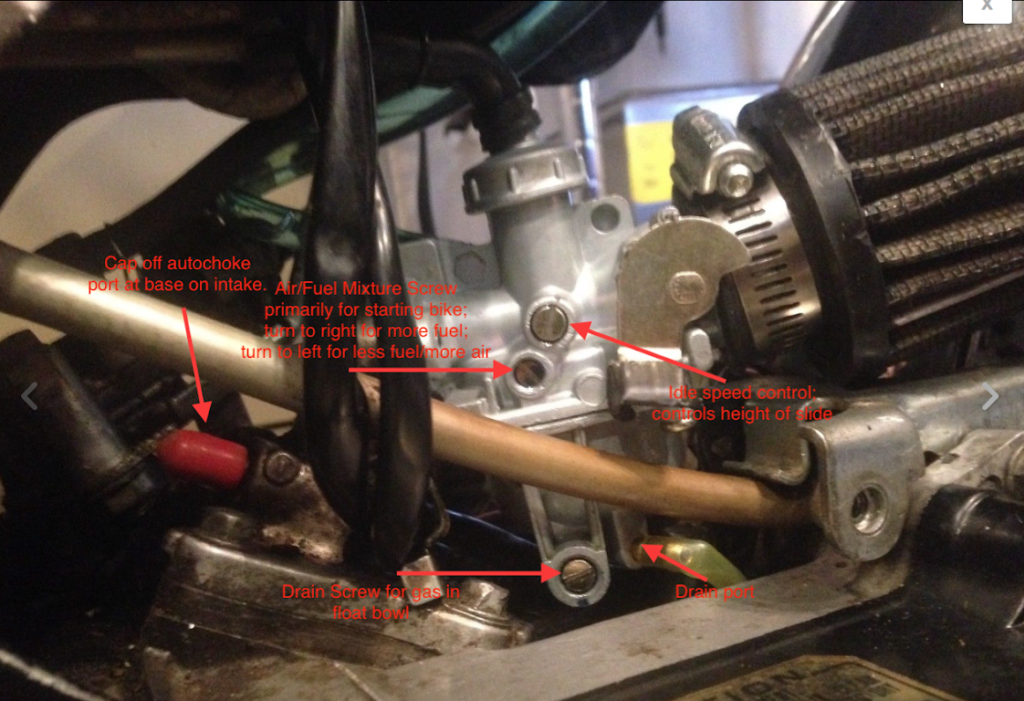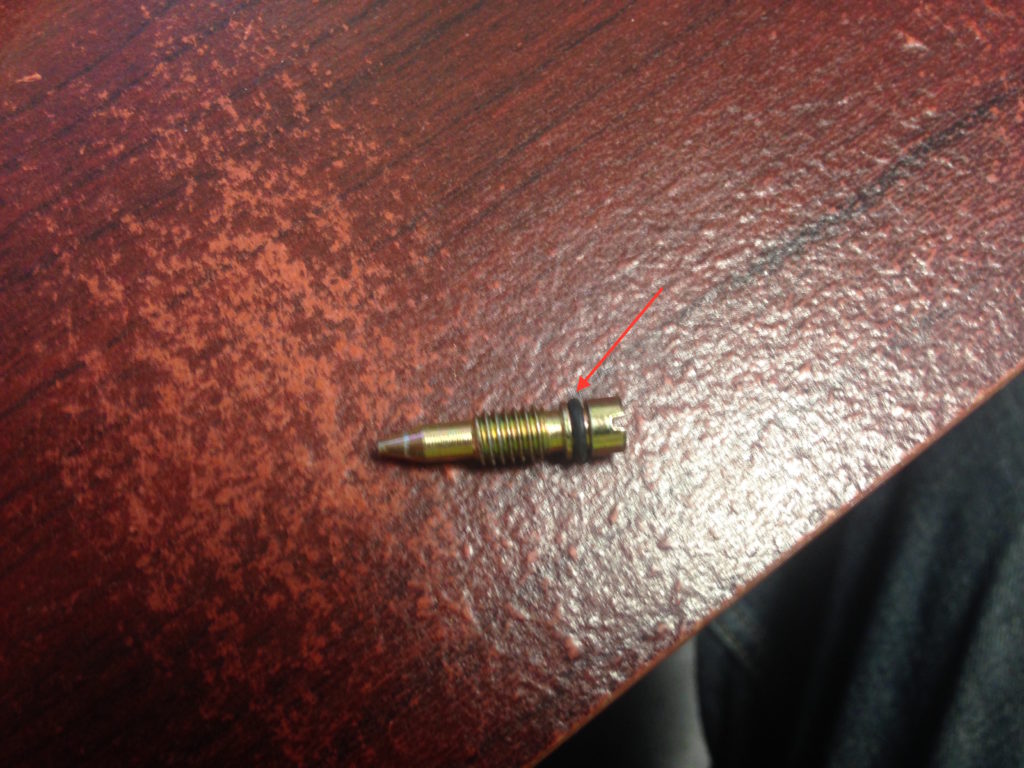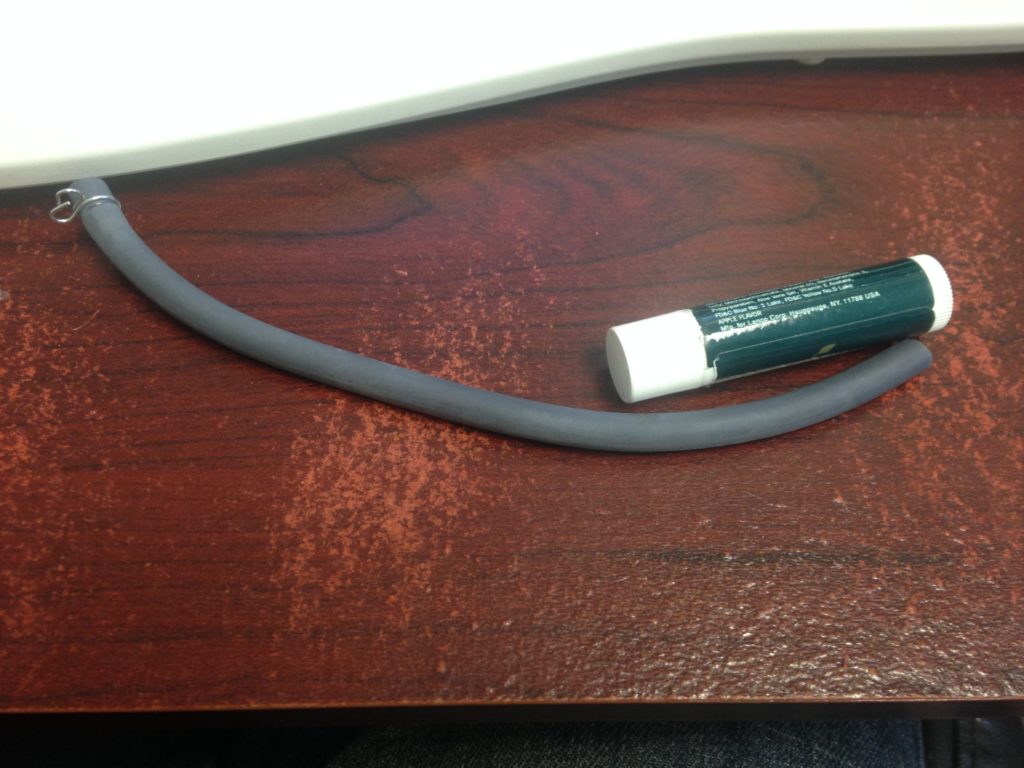
Click on the picture to enlarge it
I’ve installed the carburetor and I’m having trouble starting my Urban Express. What can I do?
Things to check:
Make sure you have the throttle cable adjusted so that the slide will go all the way down in the slide chamber. To verify, take off the air filter and look into the carburetor venturi so the you can see the slide. Twist the throttle cable and verify that it goes all the way up and all the way down. You can adjust the cable near the handlebars at the elbow in the throttle cable and you can adjust the cable by lengthening or shortening the cable guide on top of the carb.
Make sure you installed the slide properly. The slide should slide into its chamber smoothly and easily. It is possible to put it in wrong so that it doesn’t go all the way down. To verify, take off the air filter and look into the carburetor venturi so the you can see the slide. Twist the throttle cable and verify that it goes all the way up and all the way down.
Look at the picture above. Take a screwdriver and turn the air/fuel mixture screw all the way in until it lightly seats. Don’t over tighten. Now, turn that same screw to the left 1 1/2 turns. Try starting your bike. If it will not start, turn the screw to the right 1/4 turn at a time until it starts.
If the slide is installed properly, you may want to adjust the idle speed screw and either raise or lower the slide as need be.
Use the choke to start the bike. You may want to take the air filter off to verify that the butterfly valve blocks the venturi when you engage the choke.
Turn the key on, turn the kill switch to run, turn the petcock on prior to starting the bike.
Verify that you are getting gas to and through the carburetor by checking the fuel line at the carburetor fuel inlet and by opening the float bowl drain screw on the bottom of the carb. Or you can take off the float bowl and verify gas in the float bowl.
When you first install the carb, you may experience difficulty starting because of the screw settings and getting gas into the float bowl but it will start. See my video below:
Q: This carb doesn’t fit my bike. What happened?
Honda made several different Express bikes. This carb is for the Urban Express NU50 and the Express SR NX50. IF you have a Honda Express NC50 or NA50, you ordered the wrong carb as this carb does not work on those bikes unless you are really good. I could make it work but your average person could not.
Q: I’m having trouble with installation. Do you have any installation videos for this carburetor?
Part 1 is above. Part 2 is on youtube as well.
Q: I have too much throttle cable and the slide won’t work correctly. How do I take out some of the slack?
You can adjust the throttle cable as indicated in the picture above. It is usually set for no adjustment with the stock throttle cable. By using this adjustment, you can take up about an inch or so of slack in the cable. You can also adjust the cable guide at the top of the chamber cap on the carburetor. Just unscrew it so that it raises up from the chamber cap. That adjustment should give you another quarter to half inch or so to take up any extra slack in the throttle cable and allow your slide to function correctly.
Q: I installed the carburetor and I am experiencing gas leaking from where the air filter connects to the carburetor. What is wrong?
Some dirt or other grit is blocking the needle from closing fuel off at the seat. Or your float bowl drain screw needs tightening. Either tighten the drain screw or remove the float and float needle and clean the seat with compressed air or carburetor cleaner. Usually the gas pouring out of the carb will remove the dirt but not always.
You need to install the carburetor with a new fuel filter so that no rust, crud, dirt or other foreign objects enter the carburetor and block the float needle from seating in the needle seat. Any dirt keeping the needle from seating will allow gas to continue to enter the carburetor and it will overfill the float bowl and leak out the air filter side of the carburetor or potentially elsewhere. Remember you are dealing with an almost 40 year old bike with an almost 40 year old metal gas tank. I have yet to see an absolutely perfect gas tank without any rust or dirt in it. If you think you have a pristine gas tank, think again because you are wrong. You can only see a small percentage of the entire gas tank by looking through where the cap attaches. See my video below:
How do I adjust the carburetor once I have installed it?
See my basic carb adjustment procedure here, it also applies to the Urban Express.
Q: What main jet did you install and how do I know if it is correct?
I installed a main jet that should work with a stock Urban Express (without performance modifications); however, even stock bikes are different given how they were maintained throughout their lifetime. You may have issues with your Urban Express that require a bigger or smaller main jet. I went with a compromise to try to fit all stock bikes out there. After your bike is fully warmed up (after 10 or so minutes of riding), a properly sized main jet should cause the bike to four stroke slightly at full throttle on a slight downhill. Your main jet is around a 78-80 or so. If you need a different size main jet, you can obtain them here. You may want to buy a range of jets and test them to see which works the best. Again, every bike is different, I can’t send the perfect jet for your bike without having your bike in front of me.
Q: I want to put on a bigger top end, performance exhaust or other performance modification. Will this carb work for me?
The revolution carb should work for minor performance modifications with a bigger main jet. I would recommend a bigger carburetor in general if you are going to go crazy and upgrade everything.
Q: How specifically did you handle the oil injection and auto-choke hoses? Is the fuel/pre-mix hose the only hose that gets reconnected?
I removed the oil injection line from the oil pump to the carburetor although there is a port on the revolution carb that you may be able to use for oil injection. I haven’t tested it though. I left the oil pump in the bike and took a fuel line/hose that looked to be a nice compromise between the bigger oil inlet and smaller oil outlet on the pump. I ran the hose from the oil outlet port to the oil inlet port on the oil pump. Any oil in the pump would just be circulated within the pump as a result. I tried capping off the oil inlet and outlet ports but the cap on the oil outlet port kept coming off.
I removed the auto-choke hoses completely and then you just need to cap off the port at the base of the intake. You don’t have to cap off the three auto-choke ports on the cylinder head.
Q: Where can I get bolts to connect the carb to the intake?
Your local hardware is a good option or I have bought several of these metric stainless steel socket cap bolt, nut and washer kits on eBay from metric screw and tool. Trust me, you will need more of this hardware later and it is a worthwhile investment. I have yet to come across an Urban Express or other bike that wasn’t missing some hardware or didn’t have stripped nuts or bolts.
Q: Can I delete the oil pump?
You can and your best option is this oil injection block-off plug; however, your throttle will never snap back like is used to. I would just find a hose or line that is a compromise between the oil inlet and oil outlet ports and run the hose between those. Any oil left in the pump will continue to recirculate and you will have blocked off any air leaks.
Q: Do you have any rear brake cables or where can I find one?
Here is a rear brake cable for the urban express at a reasonable price. If they are not in stock, just wait and they will be. In the meantime, you can lubricate your rear brake cable and that should help a lot. I do sell replacement cables for the front brake on eBay when they are in stock.
Q: Where does the small o-ring go?
Q: I want to quit using the oil injector but not delete it. What options do I have?
I used a carburetor drain hose that I had lying around to connect the two ports on the oil pump together. The idea is to have any oil in the pump continue to recirculate from the outlet port back to the inlet port. The inlet port is much bigger than the outlet port so this hose is too small for the inlet and too big for the outlet but a happy compromise. If you soak one end in hot water, you will be able to stretch it over the inlet port. I just used a zip tie to cinch it down over the outlet port. 3/16″ fuel line should probably work as well.
Q: What do you mean when you say that a properly jetted engine should slightly four stroke at full throttle down a slight incline?
For more information on four stroking and proper jetting see the last question and answer on this page.
Q: I have a question about the carburetor running at full speed. seems to run good idling then it runs good like at medium but that’s it it doesn’t seem to pick up any more speed. like it’s only running at 2/3 speed and that’s it even though the throttle is wide open stays at like 20 miles an hour and won’t go any faster as if maybe the main jet or something is too small …do you know where that to get larger main Jets or do you think that would even work?
Thanks for the question. The problem I have is I’m trying to jet these carbs for bikes that are in various states of maintenance. I usually jet them rich on the idle jet so that they are easy to start. I jet them a little leaner on the main jet because Honda seemed to over-jet these bikes from the factory. I’ve settled on about a 78 main jet but I change it from time to time depending on input I get from customers and different things I try in the workshop. The condition of your engine will have an impact on how the carburetor performs for you. Specifically, the condition of your piston, rings, cylinder, cylinder head, head gasket, base gasket and crank shaft bearing seals as well as other areas will determine how the carb performs.
A simple compression test can reveal quite a bit. I’ve had luck with the INNOVA 3612 Compression Tester for use on small 2 stroke engines. You can find it at Amazon or elsewhere. I would say your compression should be around 125 or so for a decent running bike.
My first recommendation would be to make sure to tune the throttle stop screw and the idle/air screw on the carburetor. I have linked to an example of how to do that above. If things still aren’t going well, you can always try the main jet from your old carburetor (which is an 85 jet). You can get main jets in between at treatland.tv.
A common problem on older bikes that have sat for years is air leaks. You may have air leaking into the combustion chamber from various “seams” on the engine. For example, these seams include at the head gasket, at the base gasket, at the exhaust gasket, where the intake connects to the engine and where the carb connects to the intake. You can test these areas by spraying a little carburetor cleaner at each seam while the bike is running. If the rpms increase after spraying, you know you’ve got an air leak at that seam. Too much air is similar to not enough fuel and this could be your issue.
One thing I don’t know is how your bike was running prior to installing this carburetor. If you experienced similar problems with your old carb and are still having the same problems with the new carb, then the carburetor might not be the problem.
Q: I have a jet question. I just bought a big bore kit for my nu50 and I was wondering if you might know what size of jets you would recommend for going from a 50cc to a 60cc. Thanks
I would buy a range of 3-4 jets from 85-92 for a 60cc kit – bigger jets for a 70cc kit. Start with the 92 and see how it runs. If too rich go down to a 90 or 88 or try again. A temperature gauge is also helpful in the jetting process. You can get main jets at treatland.tv.


